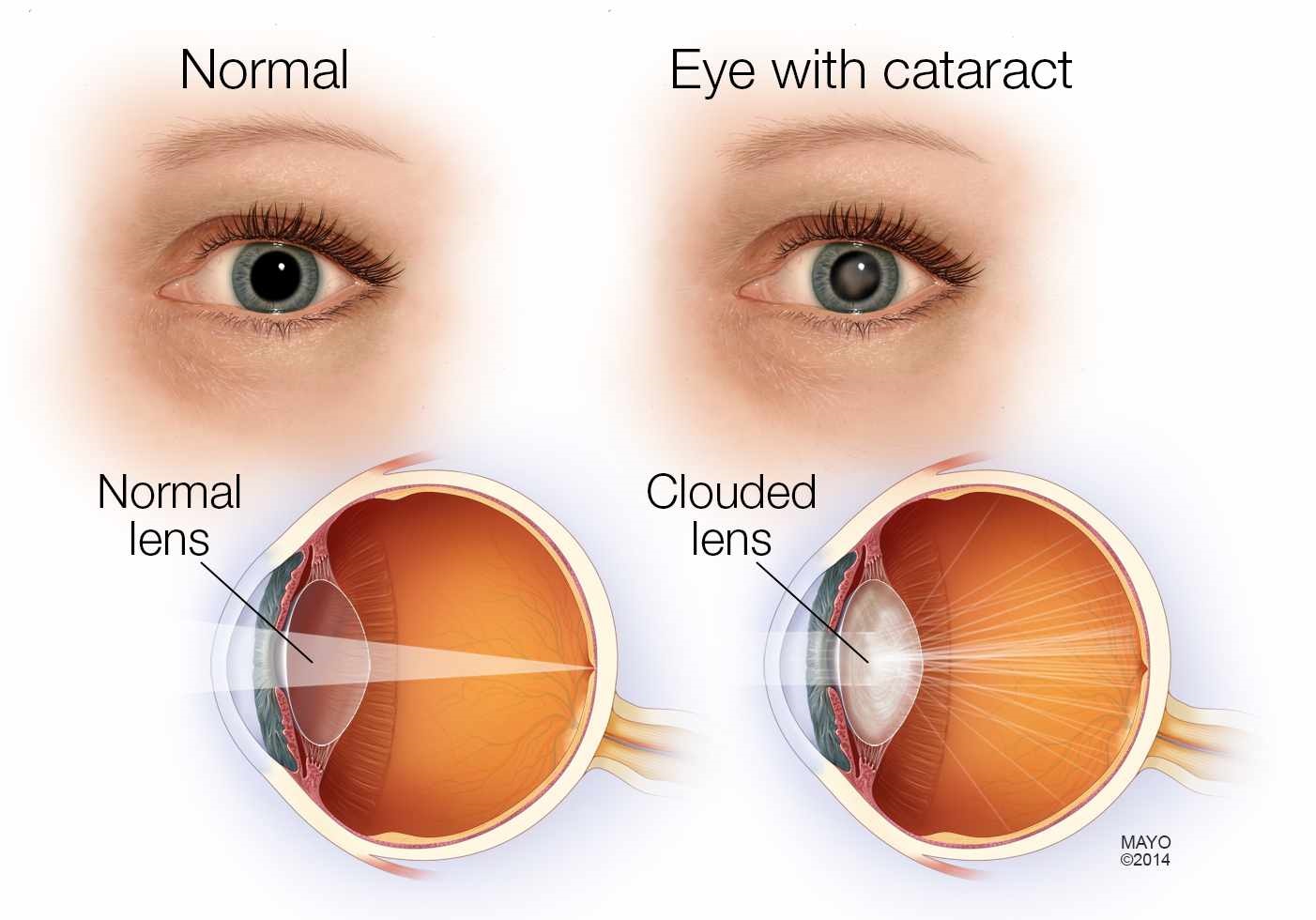The cornea is the eye's outermost layer. It is the clear, dome-shaped surface that covers the front of the eye. Unlike most tissues in the body, the cornea contains no blood vessels to nourish or protect it against infection. Instead, the cornea receives its nourishment from the tears and aqueous humor that fills the chamber behind it. When the eyelids are closed, oxygen enters the cornea from the superficial conjunctival vessels. Nutrients needed for the cornea pass into it by diffusion. Hence, carbon dioxide and waste products are also removed across the tear film. Hence, any deficiency of the tear film will directly or indirectly affect the cornea.
The cornea must remain transparent to refract light properly, and the presence of even the tiniest blood vessels can interfere with this process. To see well, all layers of the cornea must be free of any cloudy or opaque areas. The corneal tissue is arranged in five basic layers, each having an important function
The eye is like a camera in which lenses focus the picture on a light sensitive film. In the human eye, the transparent cornea and lens focus light on the retina. The retina changes the light into electrical signals, which are then transmitted to the brain by the optic nerve to be perceived as images. The cornea provides about two thirds of the eye's focusing power. It gives us a clear window to look through and is the key to good vision. It also helps shield the rest of the eye from germs, dust, and other harmful pollutants.
.

Diseases affecting the ocular surface result in non-specific symptoms and can range from a tired or itching eye to diminished vision in severe cases. The common conditions are:
Infections must be quickly and effectively tackled in order to minimize visual loss, relieve pain, eliminate the infectious agent, and minimize structural damage to the cornea and the other ocular structures. The common conditions are:
Corneal Infections are a leading cause of ocular morbidity. These infections are due to different microbes such as bacteria, virus, fungi and protozoa like acanthamoeba, microsporidia. Inflammation of the cornea, or keratitis, may be secondary to conjunctivitis, blepharitis (inflammation of eyelid margins), or injury. Keratitis is characterized by a painful red eye, sensitivity to light, and an occasional scratching sensation upon blinking. An ulcer may develop in the cornea after a bacterial, viral, fungal, or other infectious organism invades its outer layer. Herpes simplex, a virus can invade the cornea after injury, producing keratitis. Herpes zoster, another viral agent, produces inflammation of the cornea, especially if the skin of the nose is involved. A marginal ulcer is a corneal infection that occurs near the outer edge of the cornea. Central corneal ulcers due to bacteria, viruses, or fungi can be severe and serious; they may even cause loss of the eye. With these severe ulcers, the eye sets up a defense reaction to help fight the infection. This disease requires the immediate attention of an ophthalmologist.
Common predisposing risk factors are corneal trauma, poor hygiene in contact lens users, and abuse of steroid eye drops. Diagnosis depends on the typical clinical feature of each offending microbe and it can be confirmed on corneal scraping with subsequent microbiological evaluation. Treatment is instituted based on the clinical features and the microbiology report; it is specific for each infecting organism. Appropriate treatment if started early usually results in resolution of the infection with minimal loss of vision, however a delay in diagnosis and treatment can have devastating visual outcome. Sometimes drastic surgical intervention has to be undertaken. After elimination of the infection, if there is significant residual scarring of the cornea, it requires corneal transplantation for restoration of vision.
Dry eye syndrome is a leading cause of ocular discomfort affecting millions of people. Dry eye conditions are a spectrum of disorders with varied etiology ranging from mild eyestrain to very severe dry eyes with sight threatening complications. Although the typical patient of dry eyes is elderly, or suffers from autoimmune disease, increasing numbers of patients do not fit this profile. Younger patients who work with computers can suffer from dry eyes more often than elderly patients. Dry eye condition is also aggravated in polluted conditions, dry weather, decreased ambient humidity as seen with air conditioning and indoor heaters. It may also result from the abnormalities in one or more of the tear film components, ocular or systemic diseases, and various drugs. Dry eye syndrome is usually treated with tear supplements and lubricants. However, if these do not help, the insertion of microscopic plugs (temporary or permanent) can be inserted to help conserve tears and prevent them from draining away. In severe cases, surgical intervention may be essential.